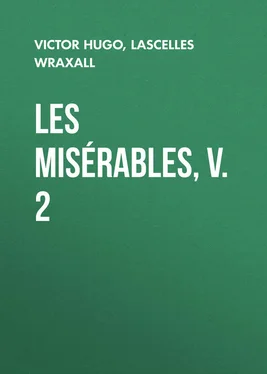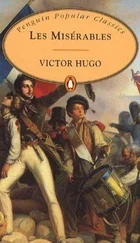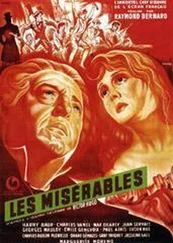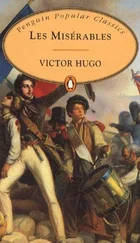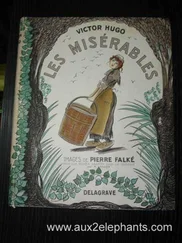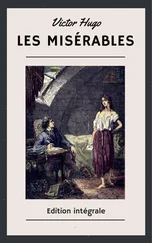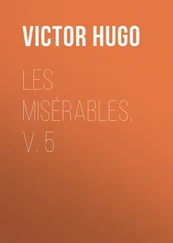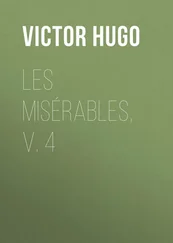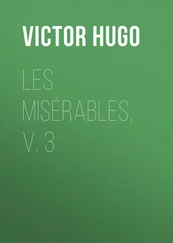Lascelles Wraxall - Les Misérables, v. 2
Здесь есть возможность читать онлайн «Lascelles Wraxall - Les Misérables, v. 2» — ознакомительный отрывок электронной книги совершенно бесплатно, а после прочтения отрывка купить полную версию. В некоторых случаях можно слушать аудио, скачать через торрент в формате fb2 и присутствует краткое содержание. Жанр: literature_19, foreign_antique, foreign_prose, на английском языке. Описание произведения, (предисловие) а так же отзывы посетителей доступны на портале библиотеки ЛибКат.
- Название:Les Misérables, v. 2
- Автор:
- Жанр:
- Год:неизвестен
- ISBN:нет данных
- Рейтинг книги:5 / 5. Голосов: 1
-
Избранное:Добавить в избранное
- Отзывы:
-
Ваша оценка:
- 100
- 1
- 2
- 3
- 4
- 5
Les Misérables, v. 2: краткое содержание, описание и аннотация
Предлагаем к чтению аннотацию, описание, краткое содержание или предисловие (зависит от того, что написал сам автор книги «Les Misérables, v. 2»). Если вы не нашли необходимую информацию о книге — напишите в комментариях, мы постараемся отыскать её.
Les Misérables, v. 2 — читать онлайн ознакомительный отрывок
Ниже представлен текст книги, разбитый по страницам. Система сохранения места последней прочитанной страницы, позволяет с удобством читать онлайн бесплатно книгу «Les Misérables, v. 2», без необходимости каждый раз заново искать на чём Вы остановились. Поставьте закладку, и сможете в любой момент перейти на страницу, на которой закончили чтение.
Интервал:
Закладка:
Men massacred each other in the chapel, and the interior, which is grown quiet again, is strange. Mass has not been said in it since the carnage, but the altar has been left, – an altar of coarse wood supported by a foundation of rough stone. Four whitewashed walls, a door opposite the altar, two small arched windows, a large wooden crucifix over the door, above the crucifix a square air-hole stopped up with hay; in a corner, on the ground, an old window sash, with the panes all broken, – such is the chapel. Near the altar is a wooden statue of St. Anne, belonging to the 15th century; the head of the infant Saviour has been carried away by a shot. The French, masters for a moment of the chapel and then dislodged, set fire to it. The flames filled the building, and it became a furnace; the door burned, the flooring burned, but the wooden Christ was not burned; the fire nibbled away the feet, of which only the blackened stumps can now be seen, and then stopped. It was a miracle, say the country people. The walls are covered with inscriptions. Near the feet of Christ you read the name Henquinez; then these others, Conde de Rio Maïor, Marquis y Marquisa de Almagro (Habana). There are French names with marks of admiration, signs of anger. The wall was whitewashed again in 1849, for the nations insulted each other upon it. It was at the door of this chapel that a body was picked up, holding an axe in its hand; it was the body of Sub-lieutenant Legros.
On leaving the chapel you see a well on your left hand. As there are two wells in this yard, you ask yourself why this one has no bucket and windlass? Because water is no longer drawn from it. Why is it not drawn? Because it is full of skeletons. The last man who drew water from this well was a man called William van Kylsom: he was a peasant who lived at Hougomont, and was gardener there. On June 18, 1815, his family took to flight and concealed themselves in the woods. The forest round the Abbey of Villers sheltered for several days and nights the dispersed luckless country people. Even at the present day certain vestiges, such as old burnt trunks of trees, mark the spot of these poor encampments among the thickets. Van Kylsom remained at Hougomont to "take care of the château," and concealed himself in a cellar. The English discovered him there; he was dragged from his lurking-place, and the frightened man was forced by blows with the flat of a sabre to wait on the combatants. They were thirsty, and he brought them drink, and it was from this well he drew the water. Many drank there for the last time, and this well, from which so many dead men drank, was destined to die too. After the action, the corpses were hastily interred; death has a way of its own of harassing victory, and it causes pestilence to follow glory. Typhus is an annex of triumph. This well was deep and was converted into a tomb. Three hundred dead were thrown into it, perhaps with too much haste. Were they all dead? The legend says no. And it seems that, on the night following the burial, weak voices were heard calling from the well.
This well is isolated in the centre of the yard; three walls, half of brick, half of stone, folded like the leaves of a screen, and forming a square tower, surround it on three sides, while the fourth is open. The back wall has a sort of shapeless peep-hole, probably made by a shell. This tower once had a roof of which only the beams remain, and the iron braces of the right-hand wall form a cross. You bend over and look down into a deep brick cylinder full of gloom. All round the well the lower part of the wall is hidden by nettles. This well has not in front of it the large blue slab usually seen at all Belgian wells. Instead of it, there is a frame-work, supporting five or six shapeless logs of knotted wood which resemble large bones. There is no bucket, chain, or windlass remaining: but there is still the stone trough, which served to carry off the water. The rain-water collects in it, and from time to time a bird comes from the neighboring forest to drink from it and then fly away.
One house in this ruin, the farm-house, is still inhabited, and the door of this house opens on the yard. By the side of a pretty Gothic lock on this gate there is an iron handle. At the moment when the Hanoverian lieutenant Wilda seized this handle in order to take shelter in the farm, a French sapper cut off his hand with a blow of his axe. The old gardener Van Kylsom, who has long been dead, was grandfather of the family which now occupies the house. A gray-headed woman said to me: "I was here, I was three years old, and my sister, who was older, felt frightened and cried. I was carried away to the woods in my mother's arms, and people put their ears to the ground to listen. I imitated the cannon and said, 'Boom, boom.'" A door on the left hand of the yard, as we said, leads into the orchard, which is terrible. It is in three parts, we might almost say, in three acts. The first part is a garden, the second the orchard, the third a wood. These three parts have one common enceinte ; near the entrance, the buildings of the château and the farm, on the left a hedge, on the right a wall, and at the end a wall. The right-hand wall is of brick, the bottom one of stone. You enter the garden first; it slopes, is planted with gooseberry-bushes, is covered with wild vegetation, and is closed by a monumental terrace of cut stones with balustrades. It was a Seigneurial garden in the French style, that preceded Le Notre: now it is ruins and briers. The pilasters are surmounted by globes that resemble stone cannon-balls. Forty-three balustrades are still erect; the others are lying in the grass, and nearly all have marks of musket-balls. One fractured balustrade is laid upon the stem like a broken leg.
It was in this garden, which is lower than the orchard, that six voltigeurs of the 1st light regiment, having got in and unable to get out, and caught like bears in a trap, accepted combat with two Hanoverian companies, one of which was armed with rifles. The Hanoverians lined the balustrade and fired down: the voltigeurs, firing up, six intrepid men against two hundred, and having no shelter but the gooseberry-bushes, took a quarter of an hour in dying. You climb up a few steps and reach the orchard, properly so called. Here, on these few square yards, fifteen hundred men fell in less than an hour. The wall seems ready to recommence the fight, for the thirty-eight loop-holes pierced by the English at irregular heights may still be seen. In front of the wall are two English tombs made of granite. There are only loop-holes in the south wall, for the principal attack was on that side. This wall is concealed on the outside by a quickset hedge. The French came up under the impression that they had only to carry this hedge, and found the wall an obstacle and an ambuscade; the English Guards, behind the thirty-eight loop-holes, firing at once a storm of canister and bullets; and Soye's brigade was dashed to pieces against it. Waterloo began thus.
The orchard, however, was taken; as the French had no ladders, they climbed up with their nails. A hand-to-hand fight took place under the trees, and all the grass was soaked with blood, and a battalion of Nassau, 700 strong, was cut to pieces here. On the outside the wall, against which Kellermann's two batteries were pointed, is pock-marked with cannon-balls. This orchard is sensitive, like any other, to the month of May; it has its buttercups and its daisies, the grass is tall in it, the plough-horses browse in it, hair ropes on which linen is hung to dry occupy the space between the trees, and make the visitor bow his head, and as you walk along your foot sinks in mole-holes. In the middle of the grass you notice an uprooted, outstretched, but still flourishing tree. Major Blackman leaned against it to die. Under another large tree close by fell the German General Duplat, a French refugee belonging to a family that fled upon the revocation of the edict of Nantes. Close at hand an old sickly apple-tree, poulticed with a bandage of straw and clay, hangs its head. Nearly all the apple-trees are dying of old age, and there is not one without its cannon-ball or bullet. Skeletons of dead trees abound in this orchard, ravens fly about in the branches, and at the end is a wood full of violets.
Читать дальшеИнтервал:
Закладка:
Похожие книги на «Les Misérables, v. 2»
Представляем Вашему вниманию похожие книги на «Les Misérables, v. 2» списком для выбора. Мы отобрали схожую по названию и смыслу литературу в надежде предоставить читателям больше вариантов отыскать новые, интересные, ещё непрочитанные произведения.
Обсуждение, отзывы о книге «Les Misérables, v. 2» и просто собственные мнения читателей. Оставьте ваши комментарии, напишите, что Вы думаете о произведении, его смысле или главных героях. Укажите что конкретно понравилось, а что нет, и почему Вы так считаете.
